
Succeeding in the cultivation of Yucca elephantipes
6 tips to grow like an expert the Elephant Foot Yucca
Contents
Appreciated for its majestic arborescent stature and exotic silhouette, the Elephant Foot Yucca Yucca elephantipes and its cultivar ‘Jewel’ – with variegated foliage – is remarkably suited to arid growing conditions, but it is a less hardy species of Yucca. It is therefore often grown as a houseplant, but can happily take its place in the garden, provided it is given the right conditions and a minimum of care… Here are 6 tips for successfully growing Yucca elephantipes so that yours is in perfect health and as stunning as possible.
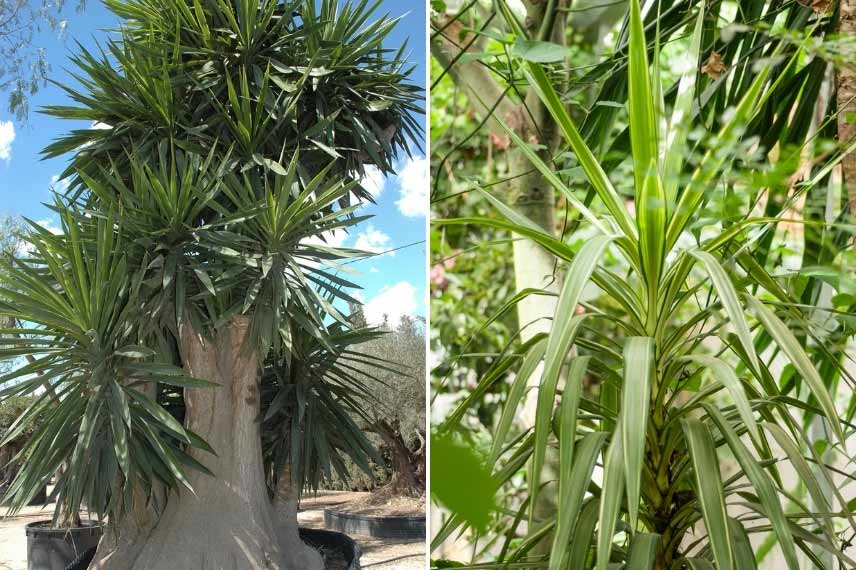
Yucca elephantipes and detail of the foliage of the variegated variety ‘Jewel’
→ Check in just a few clicks if growing the Elephant Foot Yucca is suitable for your garden or if it is better to grow it in a pot with our web application Plantfit
Growing it in pots outside Mediterranean climates
Don’t forget that Yucca elephantipes is a plant native to Mexico and Guatemala, where warmth is present all year round. The Yucca elephantipes – and by extension the ‘Jewel’ variety, which is slightly less cold-resistant – will only thrive in the ground in the mildest regions. Its foliage is damaged at temperatures as low as -2 °C, and the plant dies below -5 °C, even if you have taken care to plant it in dry soil.
If you live near the Mediterranean coast, you can attempt to plant it in the ground, provided you choose a location in full sun. However, if you reside in an area where frosts, even minor ones, are a concern, it is better to opt for planting in a pot or a large container, with well-draining substrate.
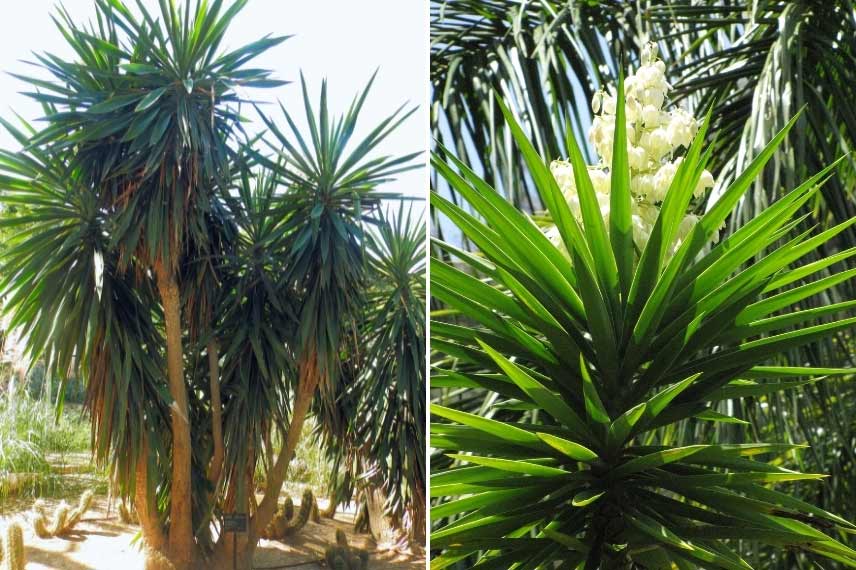
Growing Yucca elephantipes in the ground is reserved for areas with a mild climate, along the Mediterranean fringe (Amante Darmanin and Forest and Kim Starr – Flickr)
Mastering soil or substrate quality
The Yucca elephantipes adapts perfectly to any type of soil – provided it is well-drained – and has a neutral pH (acidic, neutral, or calcareous). If your garden soil is too compact or clayey, be sure to incorporate a draining material deep into the soil to improve its structure: gravel, coarse sand, or pumice will do the trick. Do not limit this addition to just a few centimetres beneath the root ball of your plant: the roots will develop deep and reach layers of soil unsuitable for the Yucca.
Also, ensure to plant your Elephant Foot Yucca slightly elevated, on a small mound, to keep water runoff away from its base.
For pot cultivation, use a mix of potting soil, fine garden soil, and coarse sand, on a bed of clay balls to ensure drainage.
Discover other Yucca
View all →Available in 1 sizes
Available in 3 sizes
Available in 1 sizes
Available in 2 sizes
Available in 1 sizes
Available in 2 sizes
Available in 1 sizes
Available in 1 sizes
Available in 1 sizes
Available in 1 sizes
Adjusting watering
If you plant your Yucca elephantipes in the ground, water regularly during the first summer to ensure better establishment. Watering should be generous and spaced out to encourage deep rooting. After that, watering will not be necessary, as the plant will manage with rainfall.
In pots, water every 10 days in winter and twice a week in summer. Be sure to let the root ball dry out between waterings, as the roots of this yucca are sensitive to excess moisture.
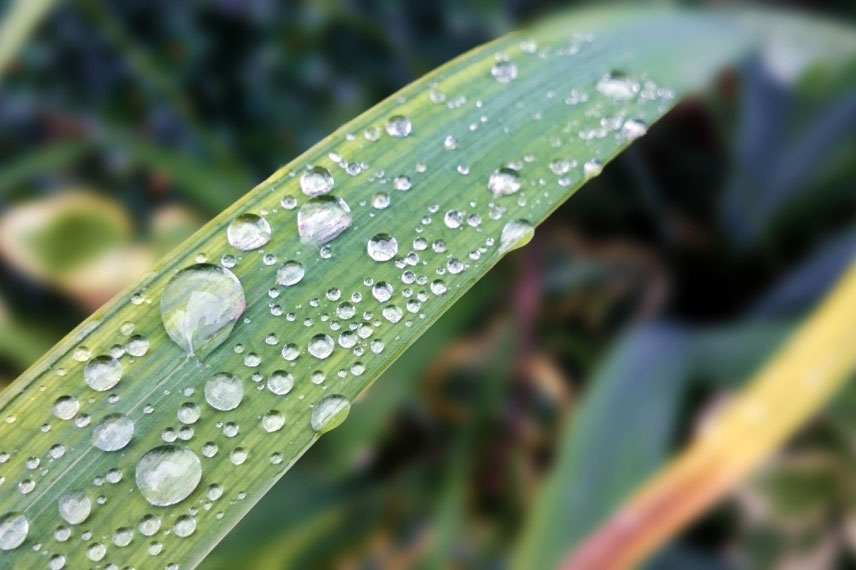
Leaf of Yucca
Read also
Choosing a yuccaExpose it to the sun and protect it from the winter cold.
Remember that your Yucca elephantipes is native to arid regions, so it physiologically requires heat and sunlight to thrive under optimal conditions. Planted in a sheltered spot away from cold winds, facing south, it will flourish and enhance large rockeries or exotic beds alongside agaves or Opuntia (prickly pears).
If you opt for pot planting, you can place it outside between April-May and September-October, depending on the climatic conditions of your region. Gradually expose it, starting in partial shade for 2 to 3 weeks before moving it into full sunlight. Always be sure to anticipate late frosts.
In September, move it back to partial shade before bringing it indoors to protect it from the cold towards the end of the month or early October. If you have a greenhouse or conservatory, feel free to winter your elephant foot yucca there, as it will thrive particularly well in any bright, not overly heated room (15 to 18°C).
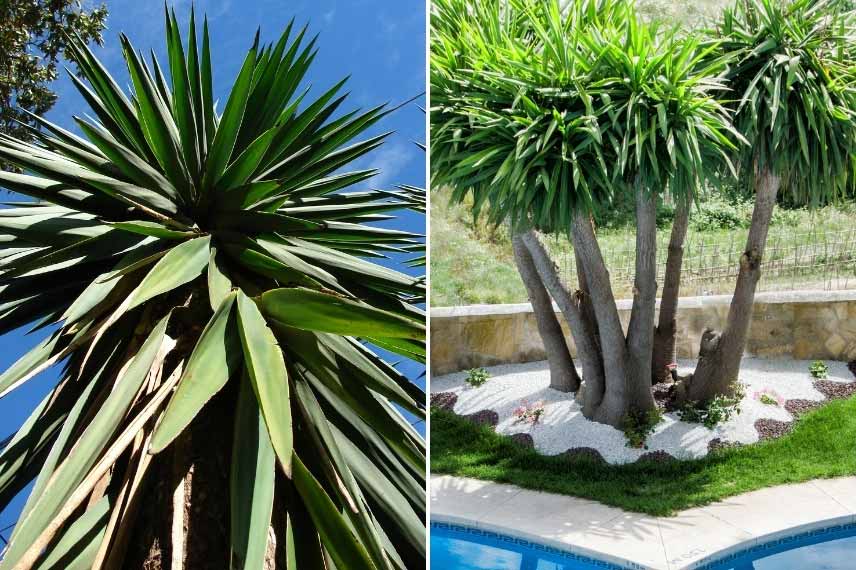
Native to desert regions, Yucca elephantipes needs sunlight
Caring for repotting and fertiliser applications
Do you think it’s more sensible to grow your Yucca elephantipes in a pot? If so, apply a type of fertiliser for Mediterranean plants from spring to summer, following the recommendations.
Repot your yucca every 2 to 4 years at the end of winter, in a slightly larger pot to stimulate its growth and accommodate its development. This will be an opportunity to add fresh substrate, which will be beneficial.
→ Find in this tutorial The key steps for repotting a plant
Avoid the main diseases and pests
The yucca weevil can attack your Yucca elephantipes, which will then show browning at the base of its leaves, drooping, and eventually the decline of the plant. Less seriously, it can also be subject to attacks from aphids, mites, or mealybugs.
Phoma is also a common fungal disease in Yuccas, with leaves displaying concentric brown or black spots. In this case, remove the most affected leaves and dispose of them to help the plant, and treat it with bordeaux mixture.
Finally, excess water can cause root rot. This can be remedied by spacing out waterings and ensuring the substrate dries out.
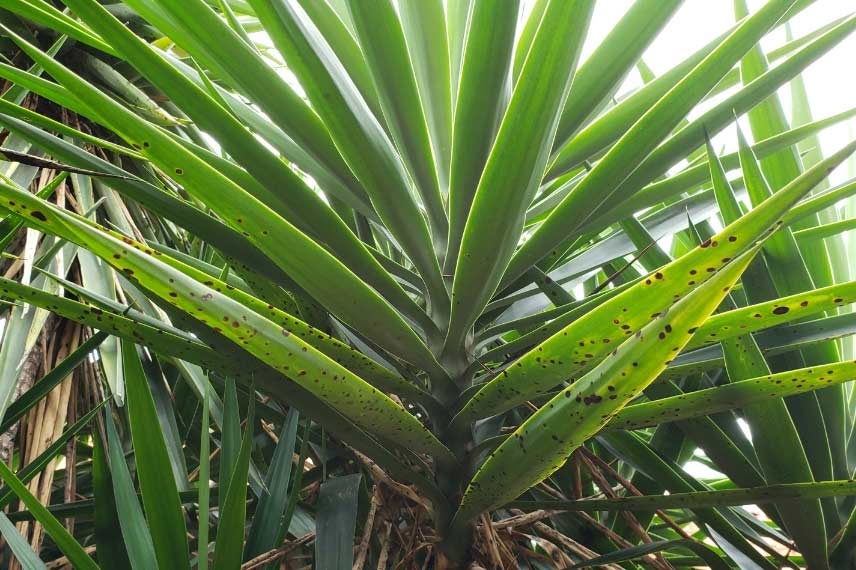 Leaves of Yucca showing characteristic spots of a Phoma infestation
Leaves of Yucca showing characteristic spots of a Phoma infestation
→ Find all our advice on this topic in our guide: Diseases and pests of yucca.
- Subscribe!
- Contents
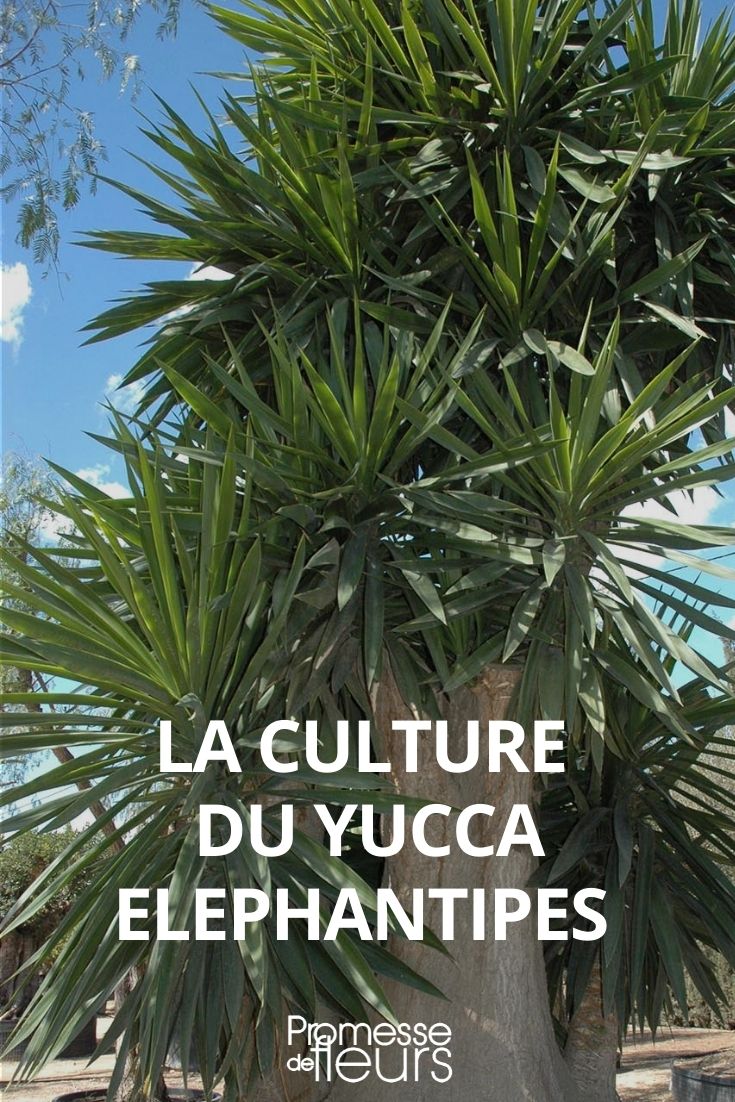
































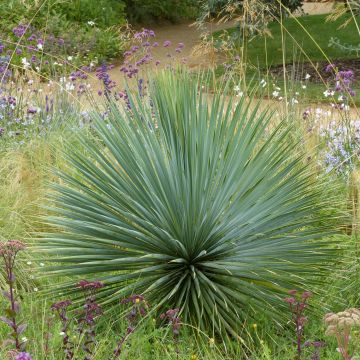

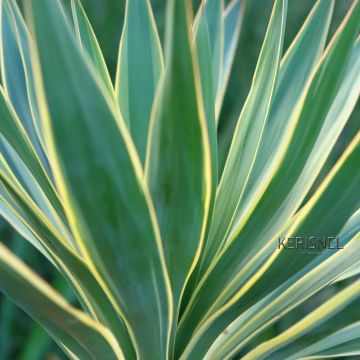

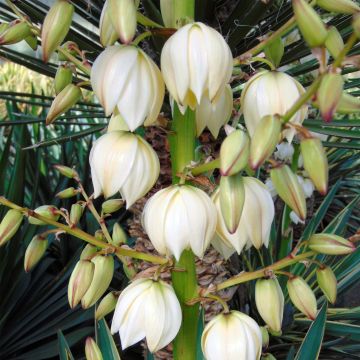



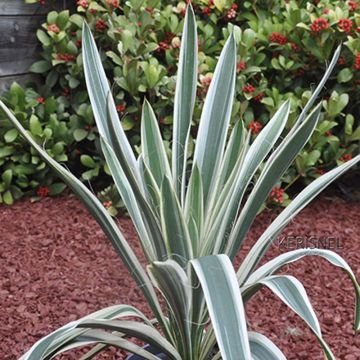
Comments